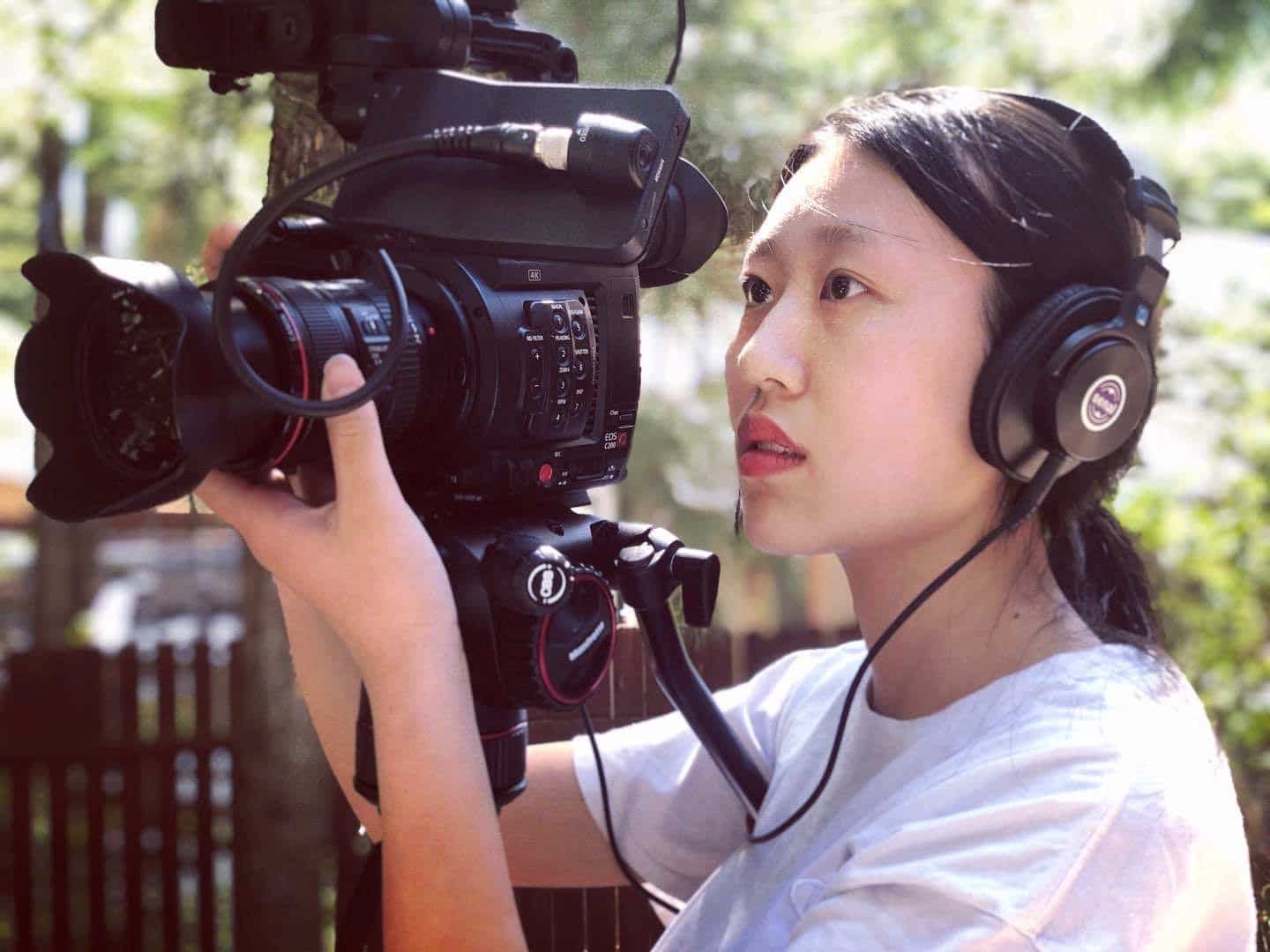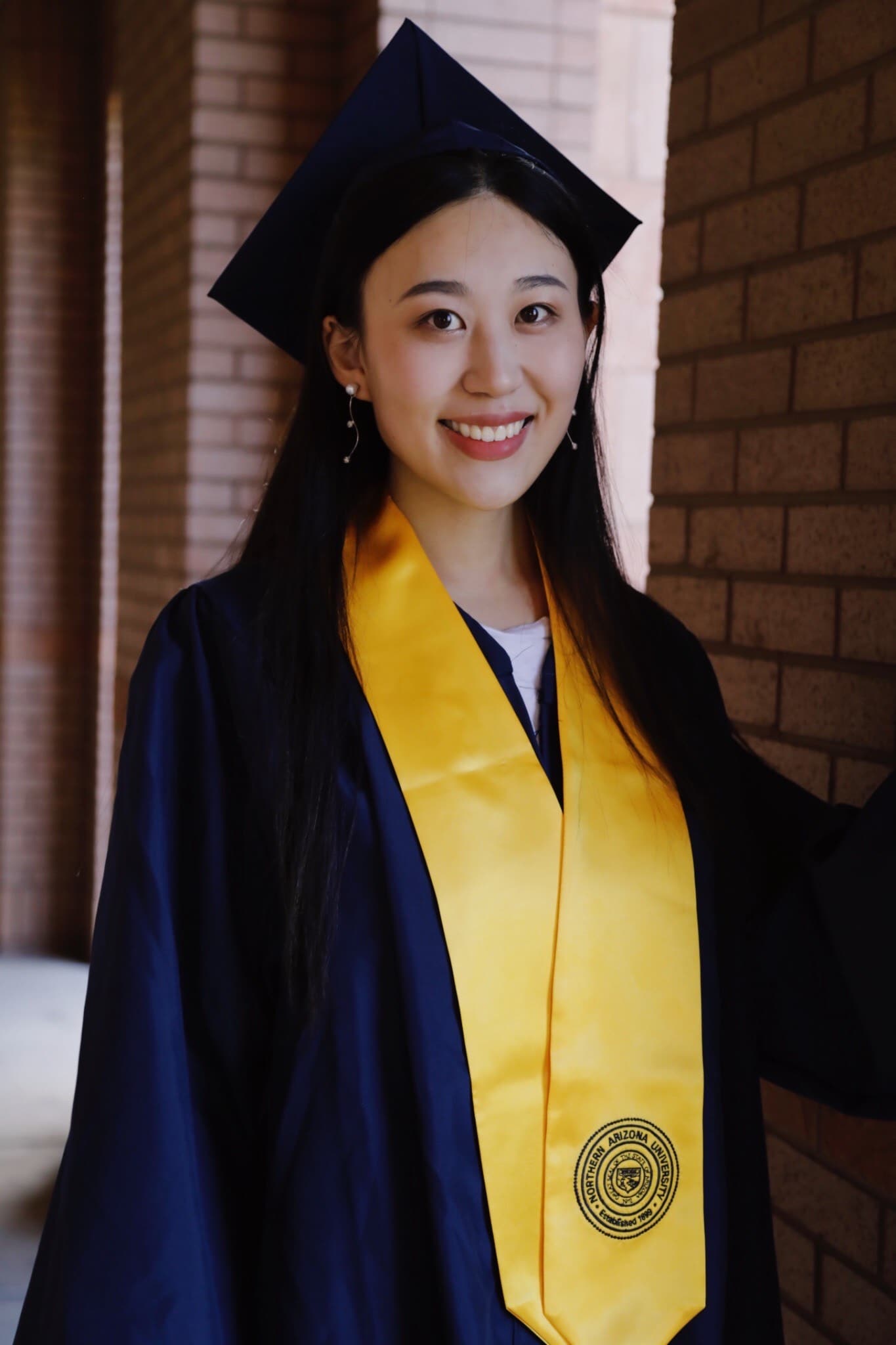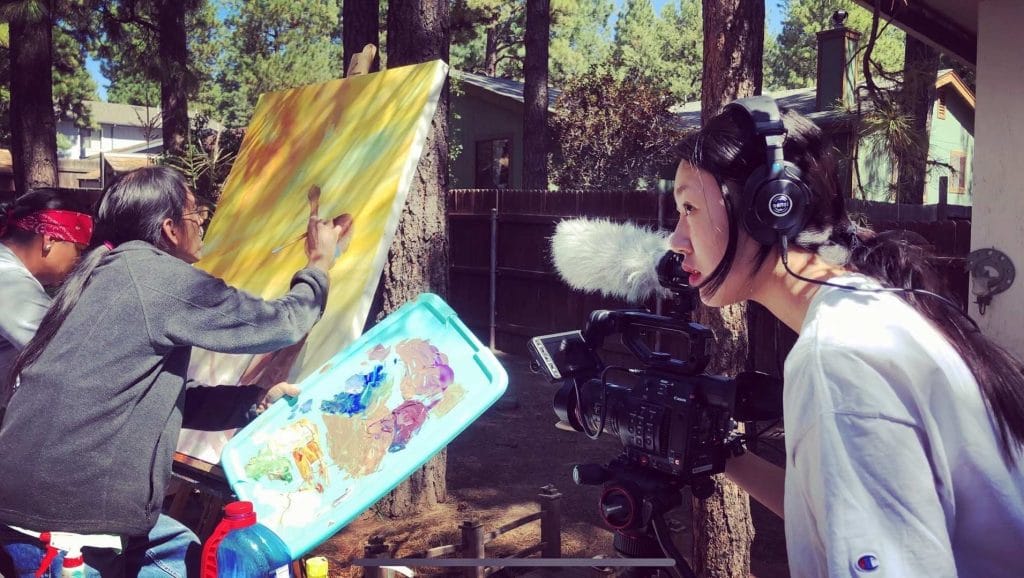Chang Xu experienced a whole new world when she came to Northern Arizona University from China two years ago.
She survived the record-breaking snowstorm of 2019. She realized, after observing her American classmates, how many strange sitting positions existed. Most importantly, she learned how to express herself.
“One big difference between China and the United States is that Chinese are generally more reserved and often shy about expressing themselves. I am also a very shy person,” she said. “But after coming to NAU, I saw that many American students were brave enough to show themselves. I saw them, and I also want to be them. So, I started to learn to express myself, to try to show myself. It’s a good change.”
Her hesitations about dealing with the cold, if her professors and classmates would be nice and whether she would ever get used to American food all subsided. NAU quickly became her home away from home.

Xu is part of the first cohort of graduates, one of 43 students from Nanjing University of Arts who came to NAU to study Creative Media and Film (CMF) as part of the 1+2+1 dual degree program. The program allows Chinese students to study at NUA for a year, then transfer to NAU and study for two years, then return to NUA for their final year, after which they earn two degrees: one from NUA and one from NAU.
Paul Helford, CMF principal lecturer in NAU’s School of Communication and the faculty coordinator for Asian academic engagement, has mentored Xu and her cohort from the beginning. When the partnership between the two universities developed in 2017, he traveled to Nanjing, China, about three and a half hours northwest of Shanghai, to do some recruiting for the then-new 1+2+1 program.
“When I first visited NUA, I walked into a classroom so cold that we were all wearing our coats and I kept my ski cap beanie on for my lecture,” Helford said. “The first thing I asked was how many of the students were planning to come to NAU the next year. Every one of the 40-plus students raised their hands. No one in our College of International Education expected all of those students to actually come to NAU, but every one of them showed up, raising all kinds of concerns regarding having enough CMF classes and seats—in a program that has experienced growth regularly since its inception in 2006—for what would ultimately amount to an approximate 30 percent increase in majors from NUA students alone.”
Ready or not, in 2018, the Chinese students showed up—putting NAU’s film classes at capacity. In order to receive their NAU degree, the students had to take a full load: 54 credits from the CMF curriculum plus 22 elective credits, including intensive English classes. To complete their degrees in the allotted two-year timeframe, most students took school year-round—enrolling in summer and winter courses.

While here, students studied all things film. They had the opportunity to learn about lighting for film, script writing, documentary film making and editing and post-production. Some students joined UTV-62, NAU’s on-campus film studio, and others took part in NAZ Today, NAU’s student-run news program. They worked with American and Chinese students alike and collaborated in groups on a variety of film projects.
“My favorite film project was my capstone film, ‘The Mark,’” Xu said. “This project is my first time as a director. From the conception to the shooting and the final cut, I watched the story improve bit by bit and learned how to cooperate better with team members. After finishing the final cut, I still felt that ‘The Mark’ was not perfect. But the reason we make movies over and over again is to make movies that are more and more perfect. I learned so much and am very grateful to my professors for their patience and help with this project.”
After two years of hard work at NAU, Xu and 26 of her classmates virtually graduated earlier this month, earning their first degree. Next year, assuming travel to China is possible, Helford plans to return to Nanjing and watch the students to whom he has grown so close and see come so far graduate with their second degree.
“Certainly, any international exchange program is going to afford that student an experience that will make her/his life richer, more well-rounded and, in some cases, more desirable on the job market,” Helford said. “But when I watched our Chinese students and American students working together on their capstone projects, or when I communicate with my Chinese colleagues, overcoming whatever cultural and language barriers there might be, what I think about is the importance of personal relationships across countries, cultures and languages that will last a lifetime.”
Helford credited the program’s success to the students’ willingness to take on so much and the faculty’s adaptability in working with students from two different cultures. He hopes to partner with other Chinese universities and eventually expand the 1+2+1 offerings to all five School of Communication majors.
“By my (pre-COVID) calculations, with new cohorts coming in and graduates matriculating out, the NUA exchange program will ultimately grow to nearly well over 90 CMF majors, reaching its peak in spring 2022.”
That, he said, should be enough to keep himself and the other CMF faculty more than busy.

(928) 523-5582 | carly.banks@nau.edu



